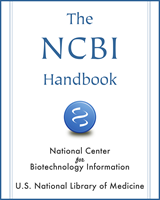From: Chapter 4, The Taxonomy Project

NCBI Bookshelf. A service of the National Library of Medicine, National Institutes of Health.
By the time the NCBI was created in 1988, the nucleotide sequence databases (GenBank, EMBL, and DDBJ) each maintained their own taxonomic classifications. All three classifications derived from the one developed at the Los Alamos National Lab (LANL) but had diverged considerably. Furthermore, the protein sequence databases (SWISS-PROT and PIR) each developed their own taxonomic classifications that were very different from each other and from the nucleotide database taxonomies. To add to the mix, in 1990 the NCBI and the NLM initiated a journal-scanning program to capture and annotate sequences reported in the literature that had not been submitted to any of the sequence databases. We, of course, began to assign our own taxonomic classifications for these records.
The Taxonomy Project started in 1991, in association with the launch of Entrez (Chapter 15). The goal was to combine the many taxonomies that existed at the time into a single classification that would span all of the organisms represented in any of the GenBank sources databases (Chapter 1).
To represent, manipulate, and store versions of each of the different database taxonomies, we wrote a stand-alone, tree-structured database manager, TaxMan. This also allowed us to merge the taxonomies into a single composite classification. The resulting hybrid was, at first, a bigger mess than any of the pieces had been, but it gave us a starting point that spanned all of the names in all of the sequence databases. For many years, we cleaned up and maintained the NCBI Taxonomy database with TaxMan.
After the initial unification and clean-up of the taxonomy for Entrez was complete, Mitch Sogin organized a workshop to give us advice on the clean-up and recommendations for the long-term maintenance of the taxonomy. This was held at the NCBI in 1993 and included: Mitch Sogin (protists), David Hillis (chordates), John Taylor (fungi), S.C. Jong (fungi), John Gunderson (protists), Russell Chapman (algae), Gary Olsen (bacteria), Michael Donoghue (plants), Ward Wheeler (invertebrates), Rodney Honeycutt (invertebrates), Jack Holt (bacteria), Eugene Koonin (viruses), Andrzej Elzanowski (PIR taxonomy), Lois Blaine (ATCC), and Scott Federhen (NCBI). Many of these attendees went on to serve as curators for different branches of the classification. In particular, David Hillis, John Taylor, and Gary Olsen put in long hours to help the project move along.
In 1995, as more demands were made on the Taxonomy database, the system was moved to a SyBase relational database (TAXON), originally developed by Tim Clark. Hierarchical organism indexing was added to the Nucleotide and Protein domains of Entrez, and the Taxonomy browser made its first appearance on the Web.
In 1997, the EMBL and DDBJ databases agreed to adopt the NCBI taxonomy as the standard classification for the nucleotide sequence databases. Before that, we would see new organism names from the EMBL and DDBJ only after their entries were released to the public, and any corrections (in spelling, or nomenclature, or classification) would have to be made after the fact. We now receive taxonomy consults on new names from the EMBL and DDBJ before the release of their entries, just as we do from our own GenBank indexers. SWISS-PROT has also recently (2001) agreed to use our Taxonomy database and send us taxonomy consults.
From: Chapter 4, The Taxonomy Project

NCBI Bookshelf. A service of the National Library of Medicine, National Institutes of Health.